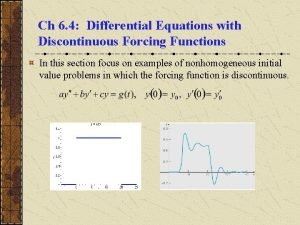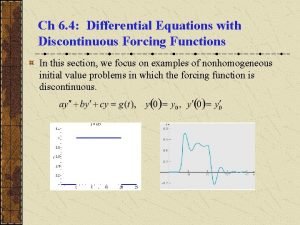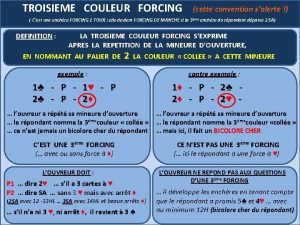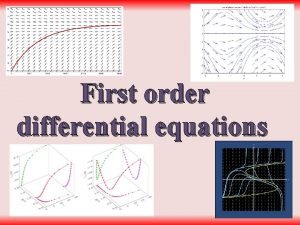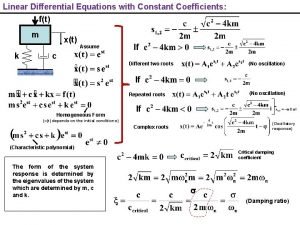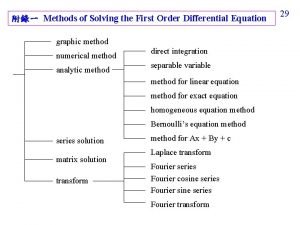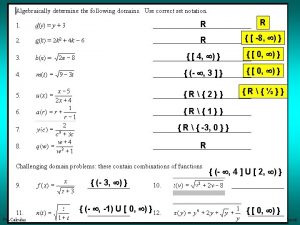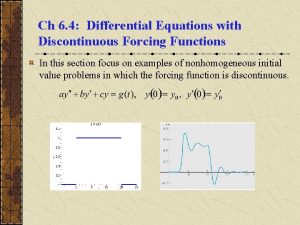Ch 6 4 Differential Equations with Discontinuous Forcing















- Slides: 15

Ch 6. 4: Differential Equations with Discontinuous Forcing Functions In this section, we focus on examples of nonhomogeneous initial value problems in which the forcing function is discontinuous.

Example 1: Initial Value Problem (1 of 12) Find the solution to the initial value problem Such an initial value problem might model the response of a damped oscillator subject to g(t), or current in a circuit for a unit voltage pulse.

Example 1: Laplace Transform (2 of 12) Assume the conditions of Corollary 6. 2. 2 are met. Then or Letting Y(s) = L{y}, Substituting in the initial conditions, we obtain Thus

Example 1: Factoring Y(s) We have where If we let h(t) = L-1{H(s)}, then by Theorem 6. 3. 1. (3 of 12)

Example 1: Partial Fractions (4 of 12) Thus we examine H(s), as follows. This partial fraction expansion yields the equations Thus

Example 1: Completing the Square Completing the square, (5 of 12)

Example 1: Solution (6 of 12) Thus and hence For h(t) as given above, and recalling our previous results, the solution to the initial value problem is then

Example 1: Solution Graph (7 of 12) Thus the solution to the initial value problem is The graph of this solution is given below.

Example 2: Initial Value Problem Find the solution to the initial value problem The graph of forcing function g(t) is given on right, and is known as ramp loading. (1 of 12)

Example 2: Initial Value Problem (1’ of 12) The formula on the previous slide may be generalized to: Then,

Example 2: Laplace Transform (2 of 12) Assume that this ODE has a solution y = (t) and that '(t) and ''(t) satisfy the conditions of Corollary 6. 2. 2. Then or Letting Y(s) = L{y}, and substituting in initial conditions, Thus

Example 2: Factoring Y(s) We have where If we let h(t) = L-1{H(s)}, then by Theorem 6. 3. 1. (3 of 12)

Example 2: Partial Fractions (4 of 12) Thus we examine H(s), as follows. This partial fraction expansion yields the equations Thus

Example 2: Solution (5 of 12) Thus and hence For h(t) as given above, and recalling our previous results, the solution to the initial value problem is then

Example 2: Graph of Solution (6 of 12) Thus the solution to the initial value problem is The graph of this solution is given below.
 Differential equations with discontinuous forcing functions
Differential equations with discontinuous forcing functions Differential equations with discontinuous forcing functions
Differential equations with discontinuous forcing functions Transforms of discontinuous functions
Transforms of discontinuous functions Half stem curl
Half stem curl Radiative forcing definition
Radiative forcing definition 3ème couleur forcing
3ème couleur forcing Vegetable forcing
Vegetable forcing Homogeneous and nonhomogeneous differential equations
Homogeneous and nonhomogeneous differential equations Kutta
Kutta Classifying differential equations
Classifying differential equations First order ode
First order ode Differential equations formula
Differential equations formula Mixing problems differential equations
Mixing problems differential equations Stewart differential equations
Stewart differential equations First order differential equation 中文
First order differential equation 中文 Differential equations in computer science
Differential equations in computer science
